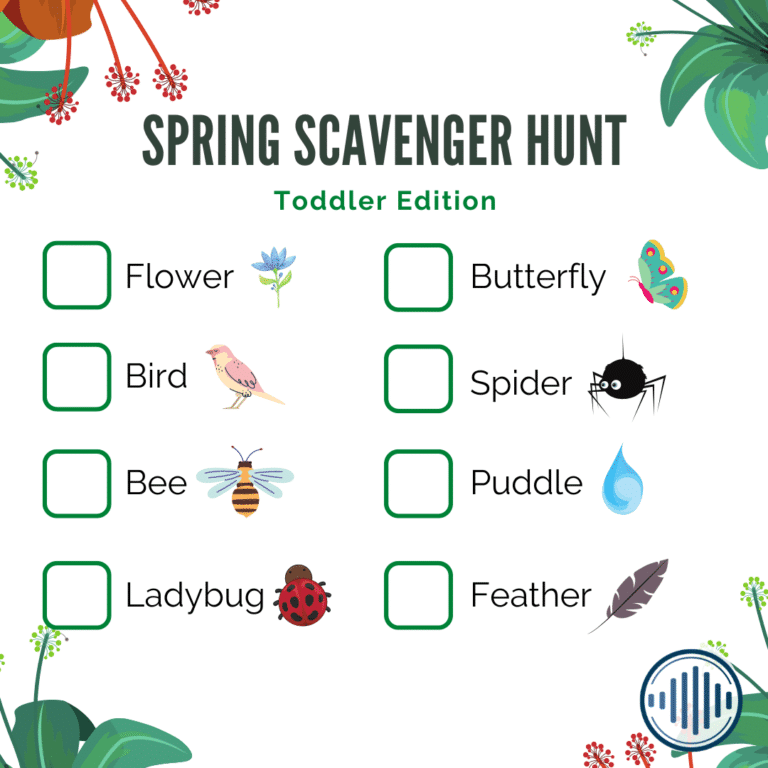By: Julie Aills, M.A., CCC-SLP
April Showers Bring May Flower! This is the perfect time of year to turn your trip to the park or walk around the neighborhood into a spring scavenger hunt. Regardless of the season or the weather, heading outside is always a great speech-language activity! We’ve made two spring scavenger hunt checklists. You can use ours, or make your own! Here are just a few of the many language skills you can target while on a scavenger hunt:
- Describing: Describe an object by stating its category, size, shape, and color. You can also try comparing and contrasting two objects to work on similarities and differences.
- Following Directions: Try incorporating basic 1- and 2-step commands with spatial concepts (e.g. between, under, next to) and sequential concepts (e.g. first/then/last) to target receptive language skills (e.g. “look under the bench” or “first find the blue flower, then find a yellow flower”).
- Vocabulary: Your child’s vocabulary is continuously growing. Label different objects and use a variety of adjectives to describe them: fast, shiny, loud, heavy, bumpy, etc. By introducing more objects and descriptive terms each week, your child’s receptive and expressive vocabulary skills will continue to grow. For our early communicators, try modeling core vocabulary such as: look, see, up, down, on, help.
- Narrative Language: Help your child take pictures of what they find on their hunt. Then later, use the pictures to let your child retell what they did and found on their scavenger hunt (e.g. “First we found this leaf next to the bench. Then we went to the playground and found the yellow flower.”).

